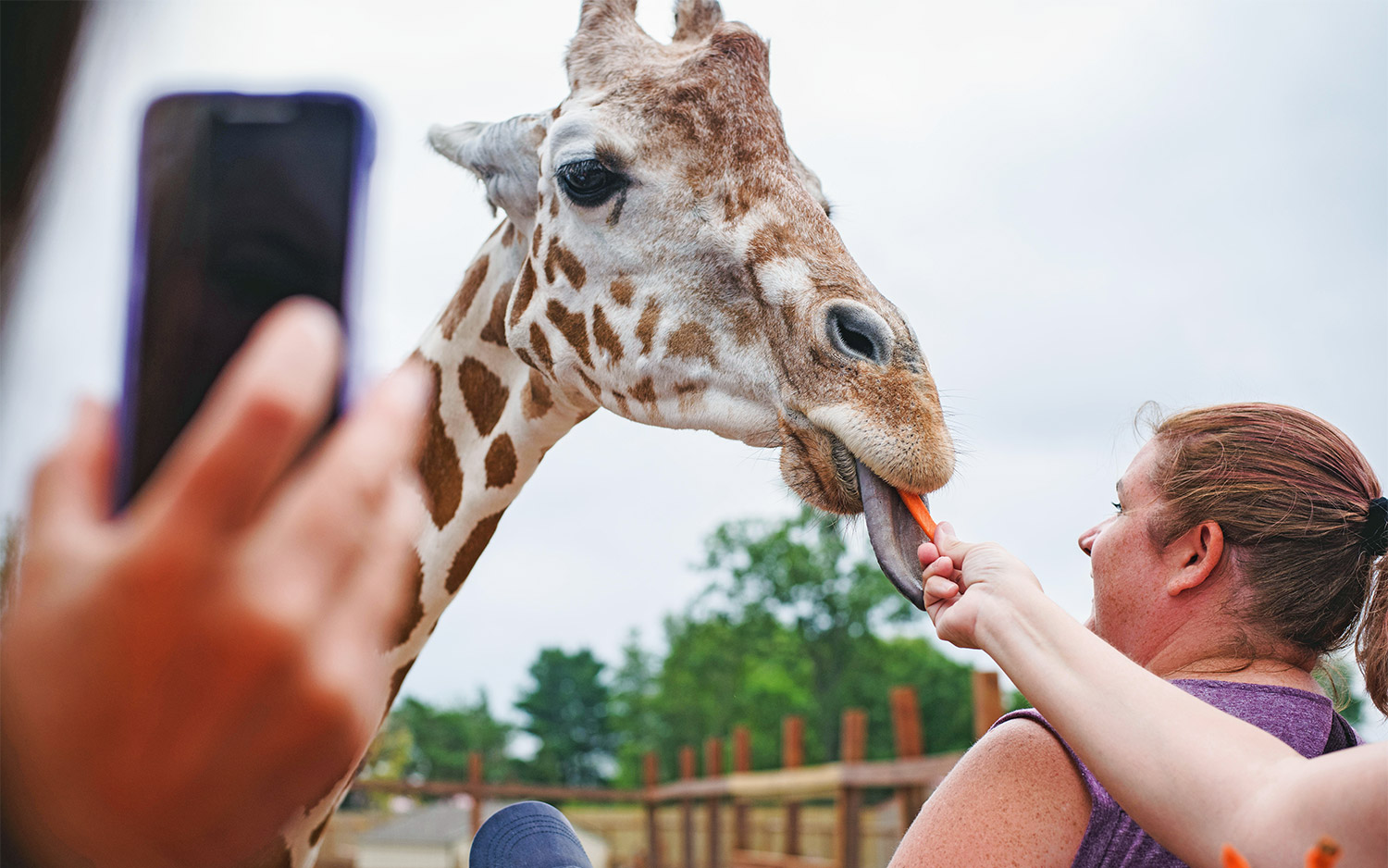April the Giraffe Is Pregnant Again. Yes, Her Cam Is Up and Running.

April the giraffe, the most famous giraffe in the world, is pregnant again. Jordan Patch, the owner of Animal Adventure Park in Harpursville, New York, where April lives, announced the good news on Wednesday (July 25).
April is a 17-year-old reticulated giraffe (Giraffa camelopardalis reticulata) who captured the hearts of millions of people as they watched a livestreaming video of her giving birth to her calf, Tajiri, in April 2017.
"Here we go again!" Patch told ABC News. Animal Adventure Park's "Giraffe Cam" is already back up and running, so fans can start watching April, Tajiri and Oliver, April's mate.
But there's plenty of time before the new calf is born. Giraffes have a typical gestation period of around 15 months, and April has been known to push it. Her last pregnancy took about two months longer than expected. Patch said he's guessing April might take even longer this time — he thinks she'll give birth sometime in spring 2019. This will be her fifth calf, and the second with Oliver, the 7-year-old male giraffe at Animal Adventure Park. [It's a Boy! See First Photos of Newborn Giraffe]
These large mammals rarely give birth to more than one calf at a time, and in the wild, only about 50 percent of calves survive due to predation, disease or malnutrition, according to a 2010 study in the African Journal of Ecology. Scientists think this might be why some wild giraffe mothers will get pregnant again soon after giving birth, during the 9 to 12 months they're nursing their newborns, as reported in a 2015 study in the journal African Zoology.
A healthy giraffe's life expectancy is around 30 years, according to the International Union for Conservation of Nature (IUCN). And unlike humans, giraffes can continue to get pregnant until they die. The oldest documented age of a giraffe giving birth in the wild was 24 years, according to the IUCN.
Wild giraffe populations are scattered across Africa, and though some groups are doing well, many are threatened. Overall, the number of wild giraffes has decreased by 40 percent in the past 30 years, according to the IUCN.
Sign up for the Live Science daily newsletter now
Get the world’s most fascinating discoveries delivered straight to your inbox.
Original article on Live Science.

Kimberly has a bachelor's degree in marine biology from Texas A&M University, a master's degree in biology from Southeastern Louisiana University and a graduate certificate in science communication from the University of California, Santa Cruz. She is a former reference editor for Live Science and Space.com. Her work has appeared in Inside Science, News from Science, the San Jose Mercury and others. Her favorite stories include those about animals and obscurities. A Texas native, Kim now lives in a California redwood forest.










